It’s so dark outside that at first, we can’t see anything. The first sounds are the cackling of ring-necked pheasants. Out of the darkness, an eerie sound reminiscent of a low note played on a wooden flute echoes across the prairie; this is the booming of the greater-prairie chicken.
I joined Randy Arndt, preserve manager, and Hilary Haley, conservation coordinator, for The Nature Conservancy in Missouri’s Dunn Ranch Prairie before dawn in a blind this April to see the prairie chickens on their ‘booming grounds’ (also known as a lek).
Prairie chickens need large prairies (at least 3,500 acres of permanent grass) to survive. Starting from 1,000 acres in northern Missouri that have never been plowed, over the years Dunn Ranch Prairie has been working to restore a fully functioning tallgrass prairie ecosystem. They now have 3,300 acres restored to 100% native vegetation – an oasis for prairie chickens.
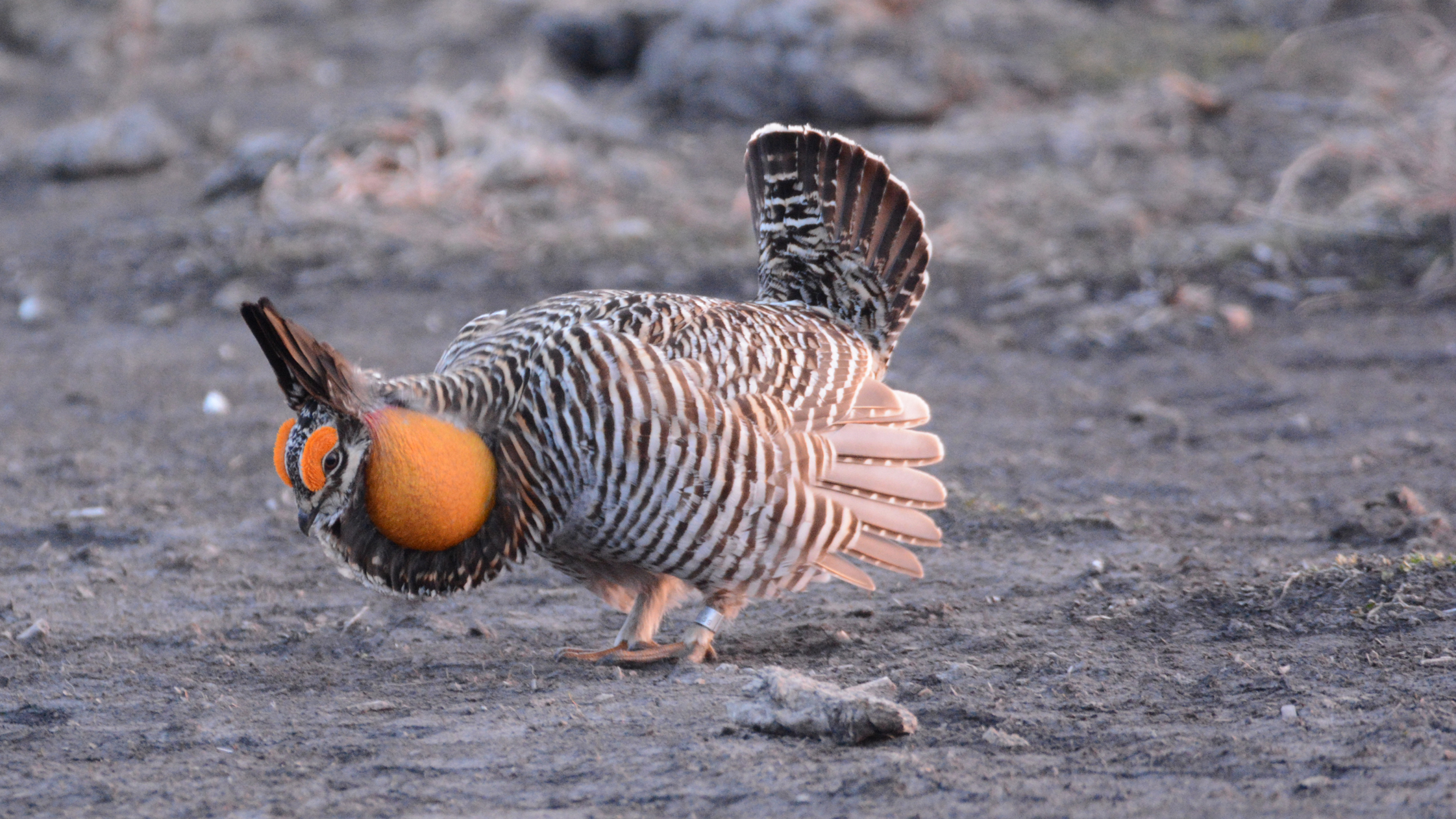
As the dawn broke, 16 shadowy figures took shape on the booming grounds. It’s easy to see why European settlers called these native grouse “prairie chickens.” In the dark, were it not for the booming sound, we could have mistaken the birds for a lost barnyard flock.
Gradually, as the light brightened, the characteristics that make prairie chickens unique became apparent. Even when at rest, the males have vibrant orange eyebrows. When they start dancing, things get really wild. They inflate two air sacs in their throat to make a ‘booming’ noise – when inflated the air sacs look uncannily like an orange poking out of either side of the bird’s throat. As the male dances, vigorously pumping his feet, he also raises feathers that usually rest at the sides of his neck, giving the impression that he has large ears or horns.
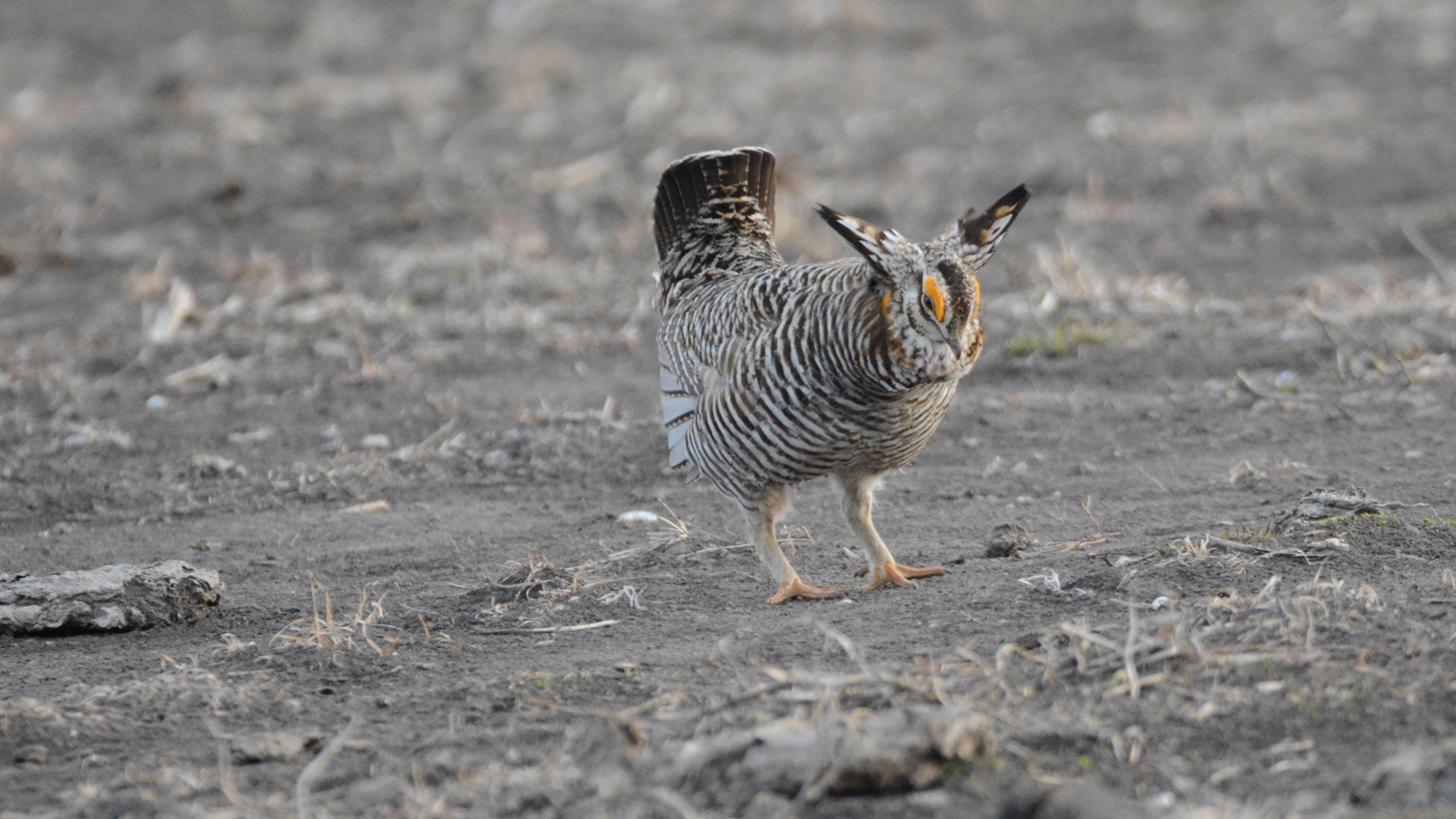
“The prairie chickens get very close here,” Haley whispers. “They sometimes jump up and start booming on the blind.” And sure enough, soon a male is dancing within five feet of the blind.
Every once and a while, males pair off for a staring contest. They size each other up before leaping in the air and sparring. It happens in a flash, but when viewed in slow motion, it looks as complicated and choreographed as a Hollywood martial arts scene.
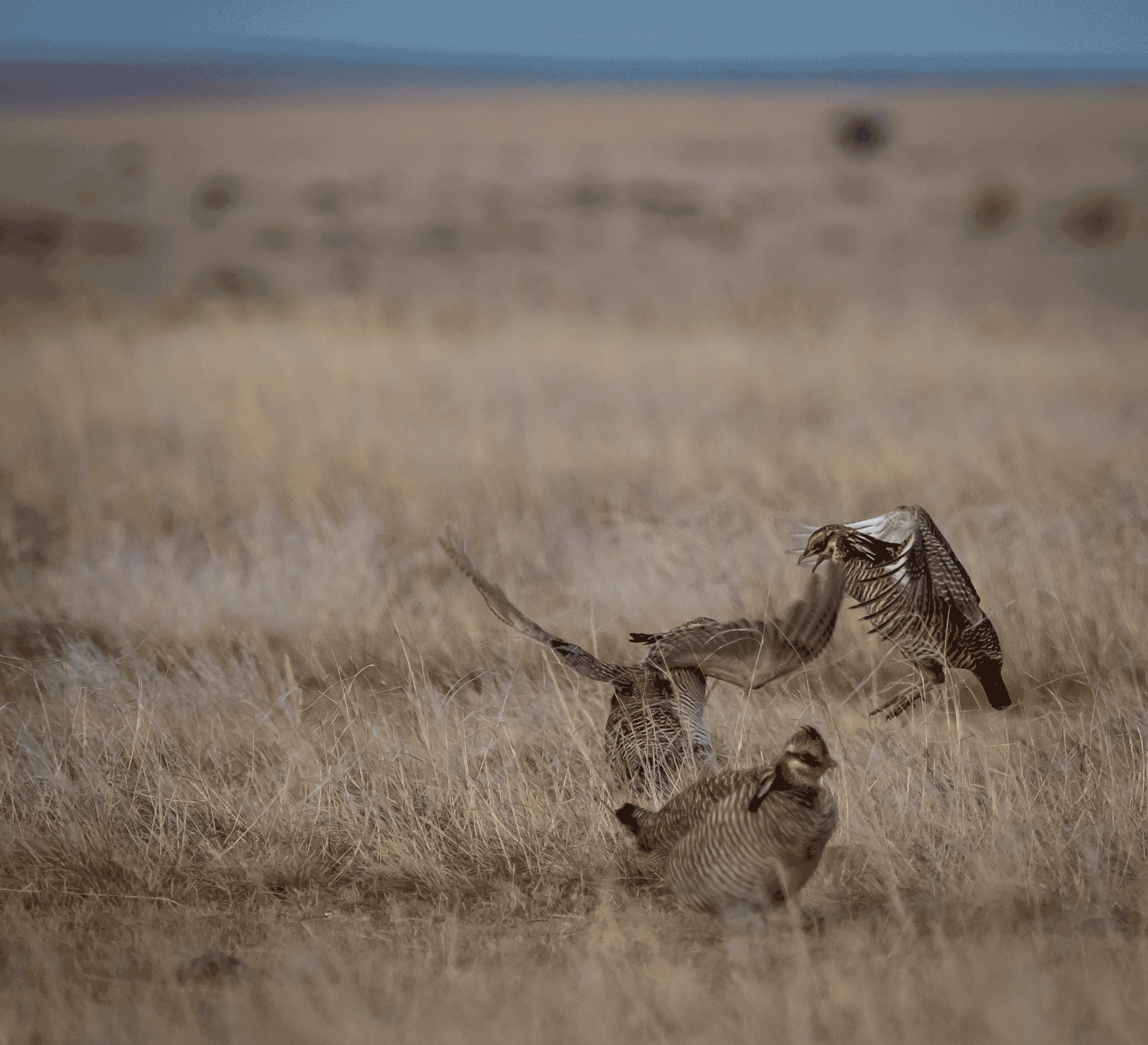
“They fight to defend their space,” Arndt explains. “The same bird will come to the same spot every morning. If flushed, he’ll return.”
We watched silently, in awe. The female prairie chickens, brown and white banded birds, appear to be unimpressed by today’s display. Males on the other hand are very excited each time a female approaches the booming grounds – they crow, then fly up in the air. Some bold males go so far as to follow the hens.
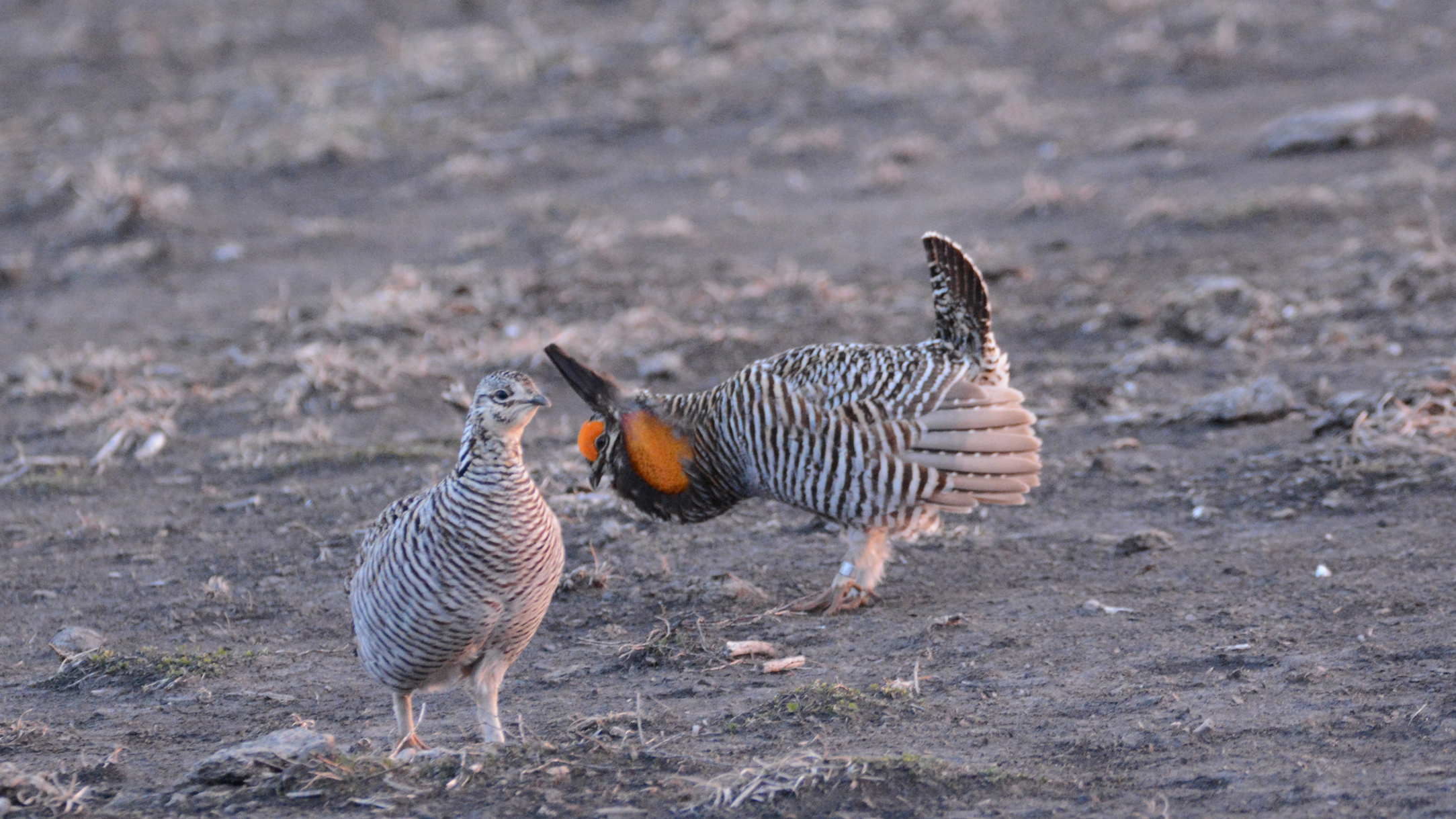
The History of Prairie Chickens on Dunn Ranch Prairie
As recently as the early 1900s, prairie chickens were so abundant in the Great Plains that they were hunted for the market and shipped by the trainload to New York City. A combination of intense hunting pressure and the moldboard plow — which allowed people to convert prairie to farmland more quickly and farm larger areas — spelled disaster for prairie chickens.
“A 1936 survey had marked the main lek here at Dunn Ranch Prairie as prairie chicken habitat,” Arndt says, “but a second survey in the fifties didn’t find any birds.” By the 1950s there were no prairie chickens in northern Missouri. In the eighties the state of Iowa got prairie chickens from Kansas and released them in southern Iowa, about 18 miles north of Dunn Ranch Prairie. The next year they were already back at the historic lek at Dunn Ranch Prairie and they’ve been here ever since.”
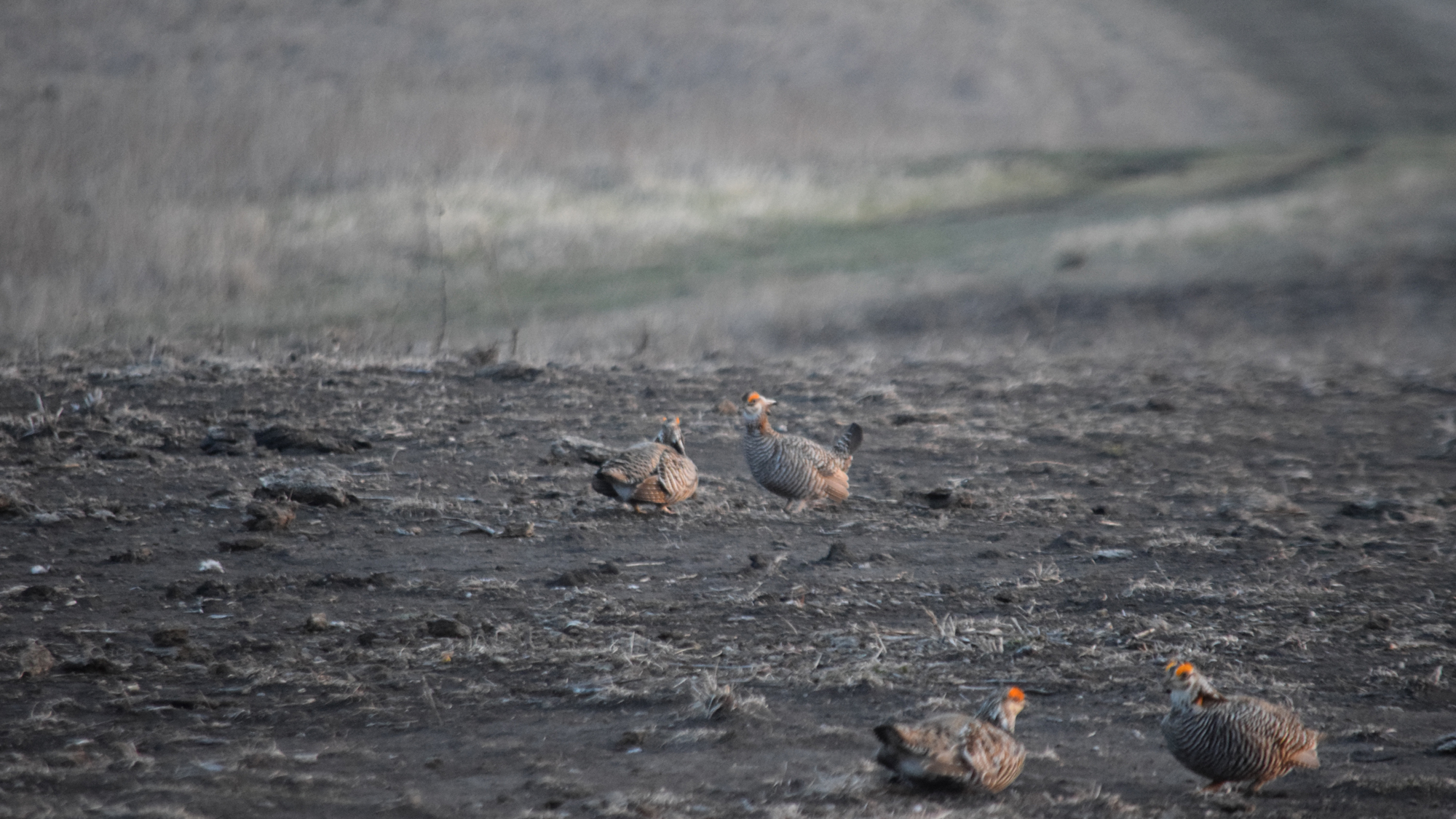
It hasn’t all been smooth sailing for the restored flock. In 2008-2009 after getting soaked in heavy rains, many of the chicks died from exposure.
“It’s like an island here,” Arndt explains, “these prairie chickens are isolated from other populations. So, if there’s a weather event, there’s no nearby population to recruit new individuals from.”
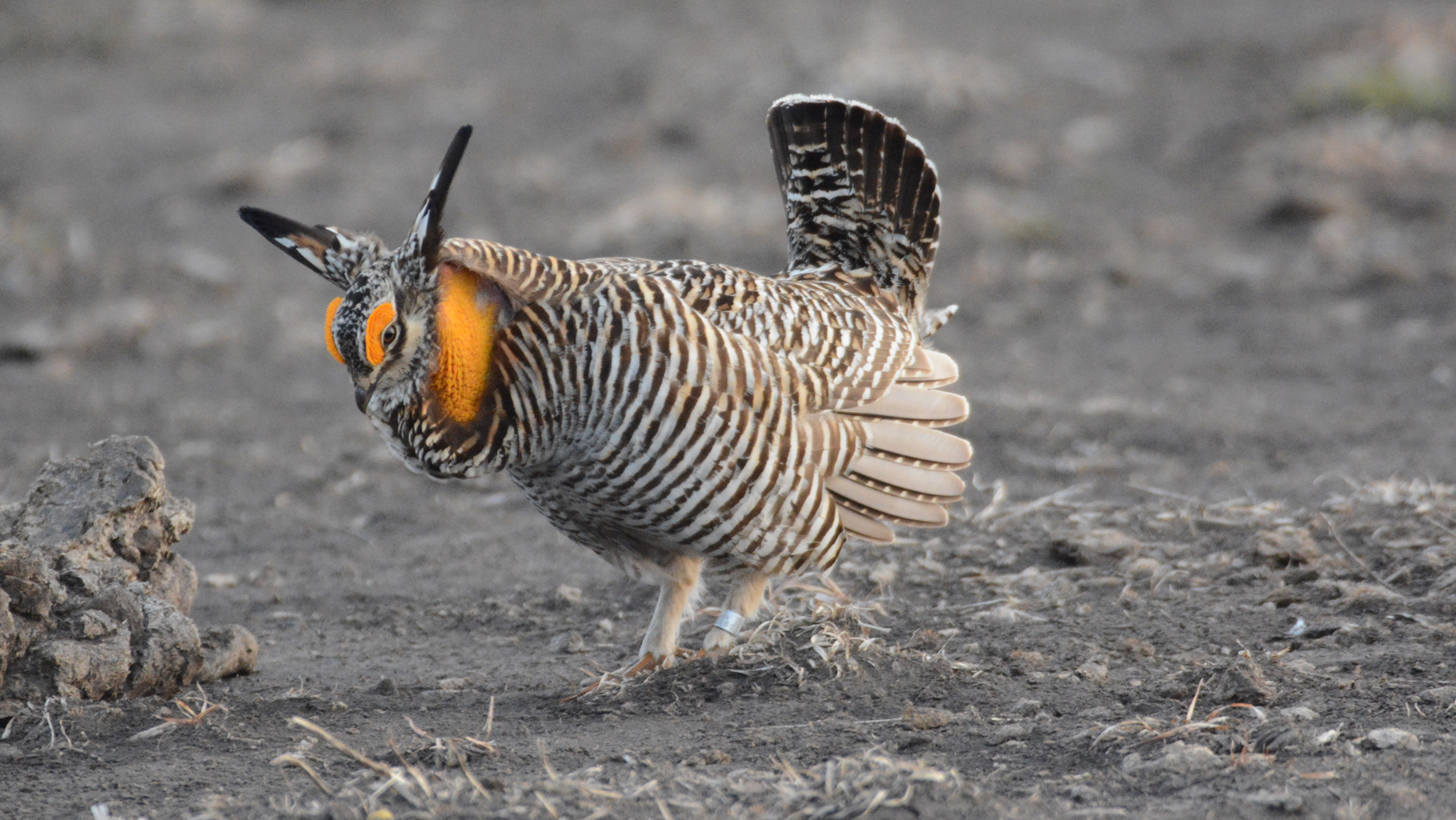
The impact of the rains was so severe that the population dropped from about 40-50 males booming on the leks in 2004-2005 to a mere 3-4 males in 2011. In 2012, Iowa and Nebraska worked together to trap 100 Nebraskan prairie chickens. Half were released at Dunn Ranch Prairie and half were released across the border at the Kellerton Bird Conservation Area, near enough that birds can travel between these two populations and help prevent inbreeding. The population is now back up to 40-50 males booming — you can immediately tell which birds were introduced from Nebraska by their silver leg bands, and a study showed that the population also retains genetic traits from the Kansas flock translocated in the eighties.
The pheasants on Dunn Ranch Prairie may also have an impact on the population. Pheasants are known to sometimes lay eggs in prairie chicken nests. Prairie chickens (and pheasants) are ready to leave the nest and follow their mother soon after they hatch — a hen only remains on the nest for an average of twenty-four hours after the first egg hatches. The pheasant chicks hatch a couple of days before the prairie chickens. That’s enough that the mother prairie chicken can be fooled into abandoning the nest and raising a brood of pheasants.
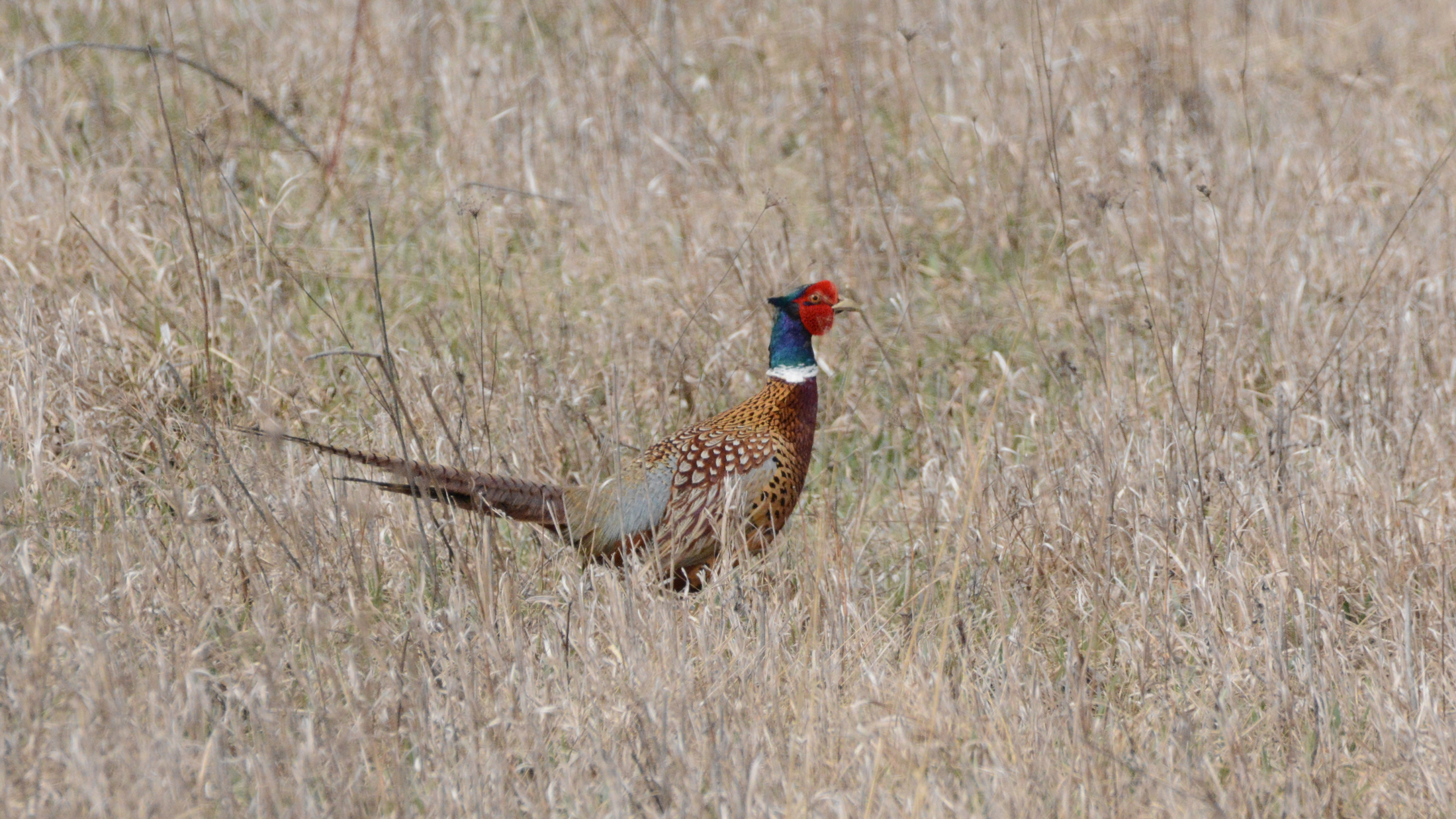
Making Space for Prairie Chickens in the Heartland
Habitat diversity is important for prairie chickens — they need open spaces for their booming grounds and nesting habitat that isn’t too tall with areas of clumpy grass. They eat a variety of native plants and insects and also make use of waste grain from adjacent agricultural fields.
Since 2007 Dunn Ranch Prairie has planted more than 2,500 acres of tallgrass prairie and they inter-seed (planting seeds from one area in another) on about 300-400 acres every year to diversify the prairie. A survey in 2000 found that Dunn Ranch prairie had 332 – native plant species. We tend to think of prairies as giant swaths of grass, but an undisturbed remnant can have up to 500 species from a variety of plant types — grasses of course, but also sedges and flowering plants.

In addition to planting, Dunn Ranch Prairie has two powerful tools for creating and maintaining a healthy prairie – fire and bison.
“There’s a big problem with cedar trees,” Arndt says. “Birds love the berries and spread the seeds. If you don’t burn, this land will go back to cedar.”

Prairie chickens also dislike really tall vegetation. In some places you could mow the vegetation or hay it, but at Dunn Ranch Prairie the prairie mound ant makes that impossible. There are thousands of anthills on the property. That leaves fire as the best option for clearing vegetation.
Bison play an important role in shaping the prairie. The areas that bison graze heavily become the open spaces prairie chickens use as booming grounds. Bison wallows provide an open space for chicks to escape the damp grass and dry out after spring rains. The open dirt of the wallows also provides an opening for new seeds to grow – and bison carry some of those seeds in their fur, dispersing them from one part of the prairie to another.

Dunn Ranch Prairie works with private landowners and other conservation organizations to create a patchwork of prairie and agricultural habitat that could bring prairie chickens booming back to the area. The prairie chickens recently returned to a booming ground in Martinsville – another historic lek from the 1936 survey.
Dunn Ranch Prairie has volunteer-led field trips to the lek during the booming season (which can last from March through June).




thanks
my husband and I moved from Missouri a year ago. Friends are in the conservation business and we went often to Prairie State Park where there used to be a lek. It is nice to read about news of positive growth now that we are 1800 miles away.
It’s always a feel good moment when I hear or read about the prairie, its grasses and its wildlife. The mention of the bison in your article brought on a smile. I consider the bison to be the true American icon and my heart truely is with them.
I JUST LOVE PRAIRIE CHICKENS. SO CUTE, SO FEISTY, SO FULL OF PISS AND VINEGAR…SO VERY AMERICAN. MILLIONS AND MILLIONS OF THEM WOULD BE JUST A GOOD START. JOHNNY ROSEN
Good to know that there are groups attempting to save these birds. Unlike in some Western states where the goal seems to be fossil fuel no matter what native species habitat is there. Nice to see caring people coming together to protect these birds.
Very interesting information and so glad to hear groups are working to bring these back!
Thank you.